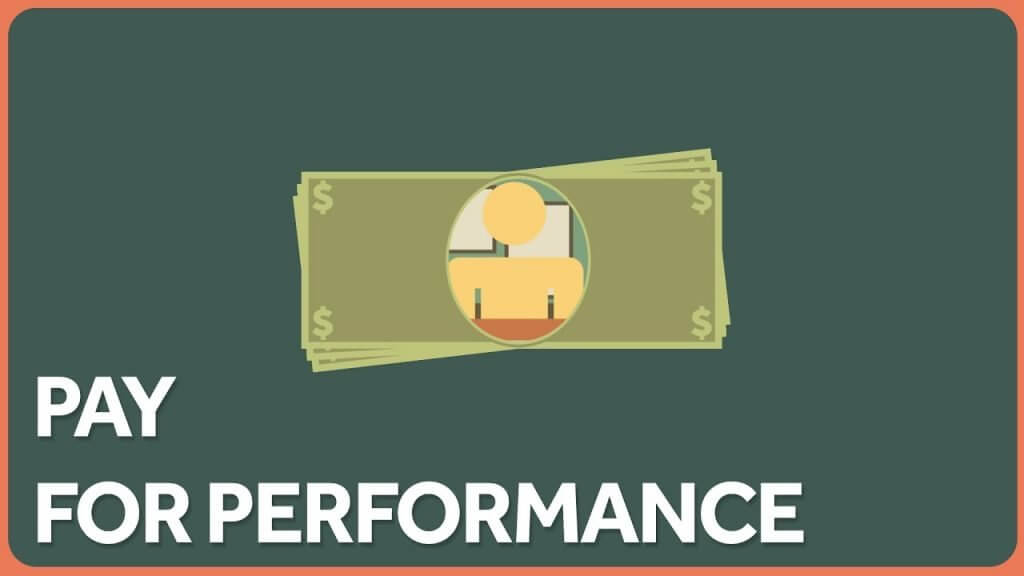Choosing a compensation policy is one of the most crucial decisions a business owner can make. In recent years, some employers have moved toward a pay-for-performance model, which provides financial rewards for employees who meet and exceed performance standards. Over time, analysts have observed both advantages and drawbacks to this method of determining employee pay.
Pay-for-performance plans assess employees on a variety of factors, such as sales volume, productivity, and quality. If these goals are met, the employee is rewarded with a salary or bonus. If, however, the bonus fails to materialize, the employee must ask why. Perhaps the standards need to be modified, or maybe the employee lacked experience or training.
Offering performance incentive plans provides strong incentives for employees to work harder. In order to maintain good relations with the company, become better employees, and earn additional income, the employees must work harder. This can create a more productive and profitable workplace.
Pay-for-performance plans can also help to improve personal satisfaction. Goals can be adjusted to fit the employees’ ability levels and experience. Rife with financial rewards, simply performing one’s job can create a positive incentive and motivate workers to continue.
When workers feel they have control over their income, it can also impact job satisfaction and morale. If an employee’s salary or bonus increases, the employee lends more energy to his job. Conversely, pay-for-performance plans can have the opposite effect. If a bonus is not received, the employee may feel cheated. A barrage of negative emotions may ensue, lowering the employee’s overall satisfaction level. Here, employees must decide if the pay-for-performance model is beneficial in the long run.
An additional drawback of this compensation policy is the tendency to hire employees who are motivated to succeed. Employees who lack motivation to succeed or have the skills to succeed will not be able to acquire a bonus. This can be a problem for small businesses that lack the resources to hire new and better employees.
Pay-for-performance plans can encourage employees to neglect the company’s core values. For instance, a worker may use unethical means to bring in a higher profit. For example, an employee who doesn’t pay taxes may boost his or her income. If workers are allowed to work until they reach a certain income level, this can be a problem. In some cases, adding extra hours or working on another project may be the only way an employee can reach those goals.
In some cases, pay-for-performance plans can encourage employee creativity and preparation. Employees who understand the process are able to think of ways to better influence the outcome of their performance. These employees might identify new customers, develop a new process, lower costs, or showcase new ways of serving customers.
When considering pay-for-performance plans, many employers are concerned with the amount they pay their employees. Most companies offer pay-for-performance plans as bonuses to reward employees for a job well done. The fear of not receiving the bonus may prompt the employee to work harder until performance standards are met.
The most common pay-for-performance model is the gain-sharing plan. Gain-sharing plans give employees an opportunity to earn a percentage of their company’s profits. In these projects, employees must perform optimally to earn a portion of a gain. These plans also award employees based on how sales, quality, and productivity of their projects compare to that of other employees. Compensation can be tied to a specific criterion or averaged over several criteria.
While pay-for-performance plans motivate employees to do their best, they too have downfalls. A major problem is that these plans can lure good employees away to other companies. Since the performance-based compensation is based upon profits, companies in a growing industry can earn a higher performance bonus than a smaller company yet have a smaller workforce.
Another problem is that the amount the company must pay to grant the bonus can be quite high. If the company fails to achieve an adequate profit level, the employees must wait longer to receive their performance bonus. A related issue is that if the company fails, employees who helped turn a losing company into a profitable company may not receive their performance-based bonuses. And while pay-for-performance plans are meant to reward good workers, they can also punish workers who make honest mistakes.
Companies that use a pay-for-performance model base bonus amounts on the estimated costs of turnover and lost productivity. These firms believe that providing financial rewards that compensate for the potential costs of turnover is justifiable. For example, if a company can save $15,000 a year by reducing turnover, awarding this amount to employees as a bonus is worth it. This would more than cover the other cost expenses that arise when employees leave.
According to one of a study by the Strategic Compensation Coalition, many executives now realize that a pay-for-performance approach can be advantageous. The report indicated that one of the biggest problems with pay-for-performance models is establishing a relationship between employee performance and pay. Common issues include the selection of the right performance standards and the difficulty in measuring them.
Employers who do not adopt pay-for-performance plans should carefully consider their business goals. The best way to encourage desirable employee behavior is to show the employees that their behavior directly affects their compensation. This will also serve as an incentive to reward good employees and shed the bad ones. Pay-for-performance plans are a valuable tool for motivating employees. However, before establishing a pay-for-performance plan, it is important to ask if it will best suit your small business.











